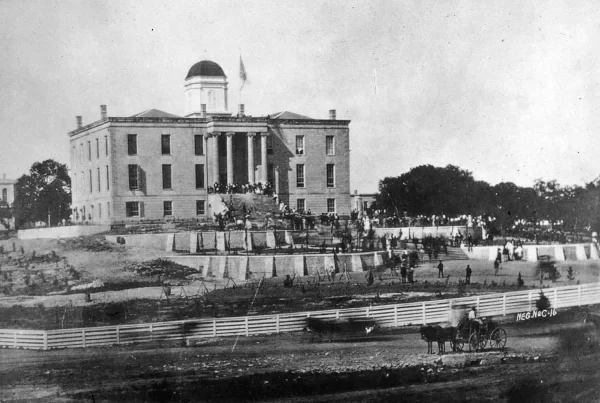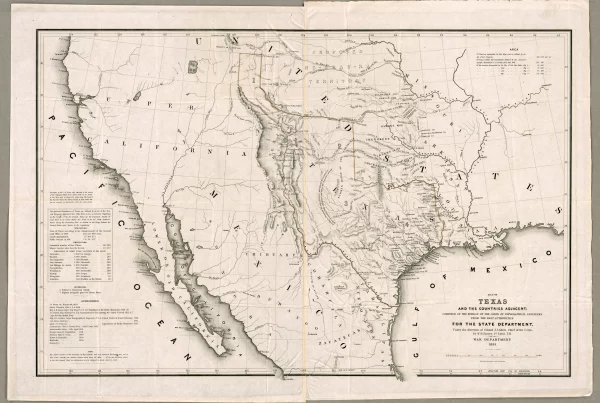Texas and Oklahoma are unique among the United States in having two courts of last resort, each with its own area of exclusive appellate jurisdiction. In both states the Supreme Court is the final court of appeal in civil cases, while the Court of Criminal Appeals is the final court of appeal in criminal cases.
This system of bifurcated appeal has the unique advantage of dividing the state’s appellate caseload into more manageable burdens to be shared by two high courts, helping to speed the administration of justice. This is particularly advantageous in a state as large as Texas. The division of responsibilities also allows for the selection of judges with particular expertise in either civil or criminal matters.
Yet whatever its structural advantages, Texas’ system of two high courts has controversial origins. The Court of Criminal Appeals’ predecessor, called the Court of Appeals, dates to the time after the Civil War, more than 140 years ago. It was established at a constitutional convention in 1875 marking the end of Reconstruction in Texas and the return to power of ex-Confederate leaders.
Members of the convention had bitter memories of the Reconstruction era “Military Court,” the state supreme court appointed by U.S. military authorities in 1867, and the “Semicolon Court,” the supreme court appointed by a Unionist civil government formed in 1870. The Semicolon Court, in the case Ex parte Rodriguez, overturned the results of the December 1873 election, on the grounds that the legislature had unconstitutionally curtailed the voting period in the recent election.
This ruling in January 1874 enraged the state’s new Democratic majority, who had trounced Reconstruction Republicans at the polls. As Professor of Law Michael Ariens explains in Lone Star Law: A Legal History of Texas, “For those who rejected Reconstruction, or who wished for a ‘redeemed’ state cleansed of Reconstruction, the court’s decision was but a glaring example of the absence of a rule of law, part of a quest for political power by northern carpetbaggers and their southern allies, the scalawags. The problem with this view was that the court’s interpretation was perfectly acceptable as a constitutional matter.”
Ex parte Rodriguez was effectively ignored. The elected legislature convened in defiance of the court, an armed standoff between the supporters of two governor claimants took place at the capitol, and the last Reconstruction governor appealed for help to President Ulysses S. Grant—to no avail. Finally, Edmund Davis, the last Reconstruction governor of Texas, left in defeat, and a long era of Democratic rule began.
As a result, the prestige of the Texas Supreme Court was already badly damaged at the start the constitutional convention in 1875. This made it easier to contemplate breaking up its power. The court was also seriously behind in its docket, with an estimated 1,600 cases pending before it, even as criminality rose to new highs in the state.
By establishing a Court of Appeals, the drafters of the 1876 constitution fulfilled the practical purpose of reducing caseload at the already overburdened Supreme Court court while also reducing the prospect of a powerful high court that could challenge or thwart their ambitions to reshape post-war society. The Court of Appeals was given exclusive jurisdiction in criminal appeals and in civil appeals from county courts, and its three members were given salaries equal to those of the Supreme Court justices.
The drafters also placed a further check on the power of the judiciary, one that would endure to the present, and which continues to be controversial. They required that the justices of both high courts be elected, not appointed. In the words of James L. Haley, author of The Texas Supreme Court: A Narrative History, 1836-1986, this was done “to place the judiciary back in the harness to the popular will.”
A vocal minority at the 1875 convention opposed the weakening of Texas’ highest court. In the records of the convention, two minority reports were produced by the convention’s judiciary committee. In one of these, a group of delegates agreed with the idea of creating a Court of Appeals but insisted that the Supreme Court retain appellate jurisdiction from it. The dissenters warned against “denying appeals in cases of any considerable importance.” Their proposal would have made the Court of Appeals a mere intermediary court, not a court of final appeal.
The majority had their way, and voters ratified the new bifurcated system in an election in 1876. They also elected to the new Court of Appeals a founding slate of justices who shared something in common: all had served in the Confederate Army, and all had been removed or retired from judicial or prosecutorial office during Reconstruction by federal military authorities.
Mathew Ector, the court’s first presiding justice, had served as a brigadier general in the Confederate army and after the war was elected district judge. But he was deposed within a year by federal military authorities for “being one of the Southern obstructionists,” according to James Lynch’s Bench and Bar of Texas, a pro-Confederate work published in 1885, which lavishes praise on the early justices of the court.

Likewise, John White, who became presiding judge when Ector died in 1879 and served until 1892, was “a thorough Democrat in his views, and during the civil war was a strong Southerner in his sentiments,” per Lynch. “He entered the Confederate service at the beginning of the war as captain of a company… and never permitted either hardship or defeat to chill his ardor or cloud his hopes until the final consummation of the issue.”
Clinton Winkler, the third founding member of the court, was a Confederate company commander who was wounded at Gettysburg. Other early justices of the court followed in the same mold. James Mann Hurt, elected to the court in 1880 following Ector’s death, had served as a captain in the Confederate Army, and twice after the war was appointed and then removed from office as district attorney, owing to conflicts with the Reconstruction government.
Perhaps not surprisingly, these early justices failed to develop a reputation for fairness and effectiveness. At a time of rising frontier lawlessness and racial lynchings, indictments were rare and convictions were even rarer. Yet the Court of Appeals did little to help. Between 1876 and 1887 the court reversed 1,604 convictions in 2,486 cases, a reversal rate that “almost beggars belief,” legal scholar Michael Ariens writes in his history Lone Star Law.
“Many reversals were for trivial reasons,” Ariens explains. “The court reversed for misspellings (“guity” rather than “guilty”) and declared defective any indictment that did not end exactly with the words ‘against the peace and dignity of the State.’” Ariens concluded that the Court of Appeals “was infected by a kind of fealty to an idealized version of the law that ignored the reality of trials in Texas. This legal formalism accepted a view of law as rules that were followed for their own sake, no matter their importance or the reason for their existence.”
Despite its dubious origins, the Court of Appeals has endured as a permanent feature of Texas’ appellate system, albeit in modified form. It was renamed the Court of Criminal Appeals in 1891, and its minor jurisdiction in civil cases was removed. Intermediate appellate courts were created that same year – the predecessors to Texas’ current 15 courts of appeals. The court was enlarged from three judges to five in 1967, and then to nine in 1978.
Writing for the American Bar Association’s Judges’ Journal in June 2017, Ben Mesches pointed out that attempts to merge the state’s highest courts have been proposed since the 1970s, “but they have seldom gained very much traction.”
Related Books
Dive deeper into this topic by purchasing any of these recommended books. As an Amazon Associate, Texapedia earns a commission from qualifying purchases. Earnings are used to support the ongoing work of maintaining and growing this encyclopedia.



